10 Features that Make a BI Ready for your Enterprise
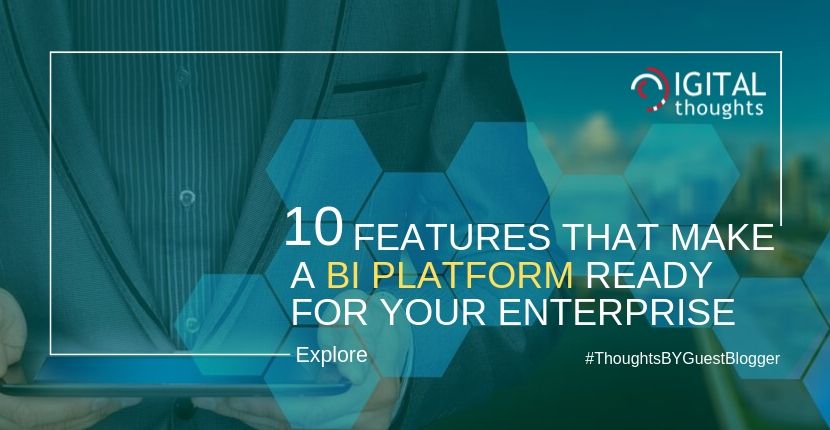
The next big step after capturing data and storing is analyzing it to bring out intelligent insights for your business. That’s where Business Intelligence platforms and tools take the higher ground. There is an array of BI platforms available to choose from. Knowing what strengths you must look for in order to empower your enterprise to become data-driven, is still a tall order to uncover.
1] Semantic Layer
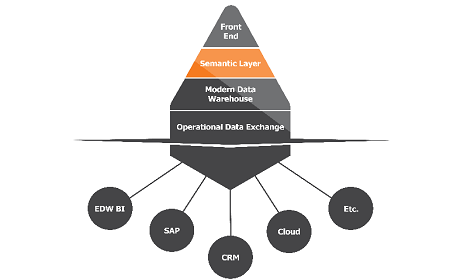
2] Self-Service Analytics
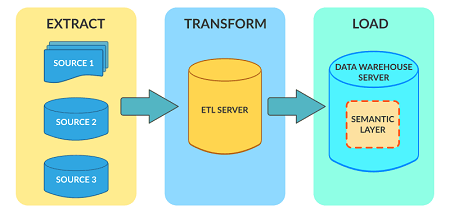
4] Single Sign-on or Embedded Analytics
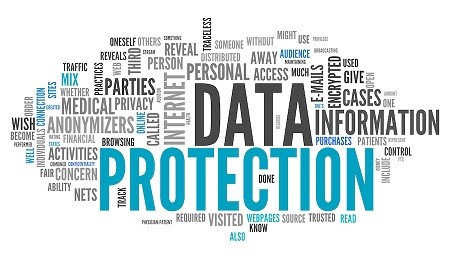
For instance, if the enterprise is operating globally, business users must be able to see only the respective country’s data. Similarly, enterprises may want to set department-wise data restrictions and masking. This is possible in a BI with a secure architecture. Another aspect of security is to know who accessed what to monitor or track user activities and can be achieved by generating audit logs.
6] Real-time Dashboarding

Source: https://bit.ly/2m5cBGQ
You don’t want to wait to know what has affected your business. Lack of information may impede timely actions.
8] Multi-Dimensional Data Warehousing (OLAP)
9] Built-in Data Science
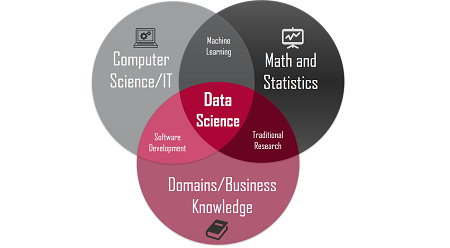
Source: https://bit.ly/2LUcZjS
10] Mobile Analytics
Conclusion
In assessing the fitment of a BI platform with your enterprise needs, this list can be a good reference point to know what the best is and the latest in terms of BI features. These 10 features if present in a BI, would make it a strong contender in fulfilling all your analytics needs.
The following is the list of 10 crucial features that can make your enterprise data-driven.

Source: https://bit.ly/2lGhF4u
When your business users set out to analyze data, they should not be encumbered into writing complex code or SQL queries to engage with your data. A powerful semantic layer in a BI platform eases data exploration and promotes autonomous end-user engagement.
Semantic layer stitched nicely into enterprise security provides data security for each role that could be exploring data for different purposes.
Reports and Analytics built over a semantic layer are naturally decoupled from the complexity of underlying logical and physical data structures and helps organizations upgrade data warehouse and data storage technologies seamlessly.
Various business users in an enterprise have a variety of analytics needs. Self-service BI enables all users to interact easily with the BI platform based on their roles.
Self-service enabled BI induces lesser time to insights and cuts downtime of a report development life-cycle considerably. In a typical process, it usually takes 1 to 8 months to create and update reports if a platform lacks self-service capabilities. Self-service enables users to perform operations to create, update, and enhance reports, dashboards, and more with ease. This helps users in deriving critical business outcomes without delay due to long report development cycles.
In a self-service environment, a business user can create reports or dashboards in simple steps without depending on IT or data analysts. Self-service data preparation capabilities help a data modeler easily connect data stores and transform the data from multiple sources to use it in reporting.
Self-service increases the democratization of data, improves user independence and enables timely data analysis.
3] Connectivity to Diverse Data Sources and ETL

Source: https://bit.ly/2lO2u96
Incorporating a BI platform should not mean rebuilding your enterprise’s data stores. Your data may be stored in external sources like traditional RDBMS, big data databases, cloud, non-relational databases, social media platforms, or internal data systems like ERPs, CRMs, etc. To allow a 360-degree analysis of data, a BI platform must offer connectivity to these diverse data sources.
With connecting multiple data sources, connected ETL capability of a BI platform helps your analysts transform the data from these sources as needed. Connected or integrated ETL ensures that updates in your datasets or your queries reflect in your end reporting in real-time which a non-connected ETL may present difficulties with. This would help business users to do a 360° analysis of your business performance and bring out relevant insights.
You want your users to get to insights quick and easy. It may get tedious to do multiple logins to reach your data insights or even juggle between platforms. For enterprise admin users, another pain point is to give authorization and assign roles if you are using separate platforms for business operations. This is where single sign-on, embedded BI adds value to your application. With embedded analytics, you can add strong analytics capabilities to your platform/application, increase end-user adoption, and put your data in a better context.
Embedded analytics works well with other embedded technologies. For instance, if you are using an embedded database in your application, embedded analytics can scale up to serve as an enterprise analytics solution over your embedded data.
To avoid loss of data, security around authentication, authorization, and data transfers is an added asset of a powerful embeddable BI. To match the look and feel of your application, a customizable UI in a BI would be useful. Multi-lingual support in embeddable BI platforms is a plus for organizations operating globally.
.
5] Security

Source: https://bit.ly/2ktRtKb
When it comes to critical business data, security is a significant concern for enterprises. Compromising data privacy, data manipulation, cross-site scripting, and other vulnerabilities are a few threats that are a big no-no for enterprises. With that, enterprises want to regulate how users are authenticated and who can access what to protect data from unauthorized access.
A powerful BI platform does not compromise with your data privacy regardless of your data being on premise, on cloud or a hybrid solution. Moreover, it even matches your enterprise security policies.
Data encryption, user and role-based access controls, data restriction and data masking at different levels (row, column, etc.), certified security are a few security measures in a BI that would help safeguard your data.
Time-sensitive processes require instant actions on critical business inputs. This is where generating real-time insights become a crucial component in enterprise data analytics. Real-time dashboarding enables business users to monitor and analyze real-time streaming data as and when it is generated and empowers them to take instant decisions.
For instance, banks use real-time analytics and dashboards to analyze fraud detections to avoid mishaps. Call center processes use this feature to monitor call flow, availability of agents, the turnaround time of resolutions given, customer satisfaction rates, and more, to measure and improve their process constantly. These are just a few of the many applications of real-time dashboarding.
Real-time dashboards provide information that is easy to interpret, generate alerts for critical business scenarios that may be a threat, an opportunity, or even an achievement and also make next actions visible.
7] Data Alert Notifications

Source: https://bit.ly/2m5cBGQ
For instance, in banking, attack on an ongoing transaction or breach of any account is something that needs timely intervention. Manufacturing industries have high risks of machine failures. Similar threats can surface in any industry that may call for immediate action.
A BI platform must be able to address these risk factors by generating alert notifications whenever an anomaly is detected, or a threshold value has been crossed. These risks or threats are sudden, and enterprises need an unmanned system monitoring feature to get alerts timely. This feature of a BI ensures enterprises are alerted at the right time and can take preventive or corrective measures to avoid or limit any damage to a minimum.
Enterprises have set protocols to communicate critical business information to different users. The BI platform of your choice must be able to incorporate these protocols while generating alerts.
With data growing faster than anything, and demand of “speed of thought” analysis rising, new age OLAP is a lifesaver for enterprises storing big data. For enterprises storing data for a long time now, the data has grown to a limit that normal SQL querying would take hours, if not days, to bring out insights. Pre-aggregation, smart aggregation of only required data collected from various enterprise data stores is a way of addressing the ‘fast analytics’ requirement of enterprises.
An important sub-feature of a BI platform offering OLAP is leveraging parallelism with which quick response times are achieved in respect to OLAP queries.
Interactive performance concerning querying, building reports, and dashboards is another aspect of OLAP that empowers business users to analyze their data efficiently. In terms of getting to the core of data insights, certain operations in high-speed view reports like slicing and dicing, drill down, drill up, drill through, cross-linking are capabilities that a powerful OLAP reporting platform can offer for your enterprise business users.

Source: https://bit.ly/2LUcZjS
There is an explosion in the variety of data enterprises are generating and capturing. The learnings available in this variety are equally prominent. Deep learning from your business data can unravel incredible insights for your business and benefit your decision making. To enable deep learning, machine learning has to become an integral part of your enterprise’s data analytics strategies.
Machine learning-based analytics helps businesses to deep dive into data. This deep-diving helps users to identify patterns and correlations in data and helps in refining strategies based on the crucial data points that users dig out. With deep learning, your users can also perform predictive analytics to predict your business's future performance.
Easy to access, built-in machine learning capabilities in a BI would strengthen your business analytics process. Self-serve mechanisms and pre-authored machine learning algorithms will assist end-users to perform machine learning tasks at the decision point themselves, thereby reducing the dependency on IT and other teams.
What-if capabilities in a BI would help users to derive predictions based on desired business scenarios.
With increasing computing power and storage capacity, mobile devices are not just a source of communication today. Mobile devices and applications have increased the interactivity of users with business operations immensely, which can also be noted in the case of business intelligence. As this trend continues to grow, a mobile BI interface has to become an essential component for enterprise BI strategies.
Access to on-demand business insights is vital for any business to act on critical business findings timely. Mobile interface of BI application would benefit nearly all business users by providing easy access to data and analysis at the decision point, irrespective of the user’s time or location.
A mobile BI with polished aesthetics and a simple design would appeal to business users in adopting a BI platform quickly and improve data-driven-decision making for your enterprise. Mobile applications must be secure and have measures to protect data in case of lost or stolen devices. They should also have user and role-based access to let relevant people view only required information. Embeddable mobile application will be a plus for enterprises.
In assessing the fitment of a BI platform with your enterprise needs, this list can be a good reference point to know what the best is and the latest in terms of BI features. These 10 features if present in a BI, would make it a strong contender in fulfilling all your analytics needs.
